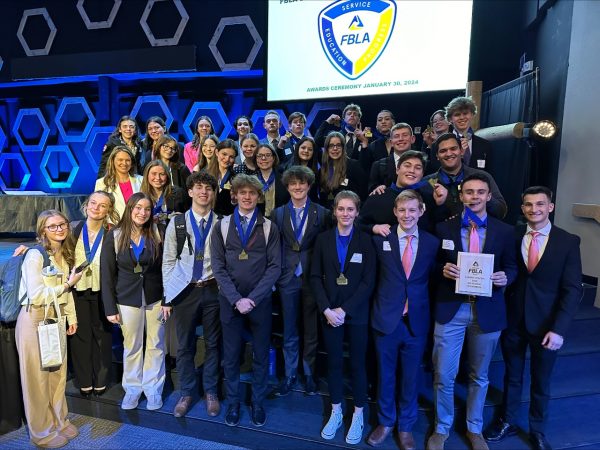Genetically Modifying Our Diets
![[untitled photo of genetically altered tomato].Retrieved April 9, 2014, from:http://www.huffingtonpost.com/lesley-daunt/gm-proponents-claim-genet_b_4936514.html](https://thejetstreamjournal.com/wp-content/uploads/2014/04/2.jpg)
[untitled photo of genetically altered tomato].Retrieved April 9, 2014, from:http://www.huffingtonpost.com/lesley-daunt/gm-proponents-claim-genet_b_4936514.html
Genetically Modified Organisms (GMOs) have allowed humans to keep up with feeding a population that is growing exponentially. A GMO is an organism that is created by synthetically introducing a desired trait from one organism to another using recombinant DNA technology (rDNA). Although there are many risks involved with genetically modified organisms, scientists are hard at work improving them so that we as humans can benefit from them without problems in our environment and health.
The purpose of genetic engineering to the crop industry is to produce genetically stronger plants that can survive with less tender love and care – plants that can better withstand extreme weather conditions and famine. We have in fact been genetically modifying our plants for thousands of years, just in a way that is not so technical. This process is called artificial selection. Artificial selection is where farmers choose plants that show favorable traits, such as drought resistance, pest resistance, disease immunity, etc., and continue to grow that plant’s seed. The goal is to eventually isolate that gene in the plant so that future crops grown will have those characteristics, making for a better growing season. Unfortunately, isolating a favorable trait this way takes decades to do, so instead of waiting every growing season to do this, we can speed up this process in a lab. This saves valuable time. If a plant is on the verge of extinction due to a ravenous disease, we can make it immune by genetically engineering it, saving it from becoming extinct. [2]
In the lab, scientists use rDNA technology to find a plant that already shows the desired trait; for example, a plant that shows drought resistance. Scientists isolate the segment of DNA that gives the plant this value; they then take it out using methods such as gene splicing and using restriction enzymes. Next, this DNA is inserted into a different plant’s DNA; this is where the name recombinant comes from. This is done in a process known as “Transformation” by microinjecting the DNA segment into the DNA of a cell or seed. Microinjection is performed by ‘bombarding’ the cells or seeds with particles of gold or tungsten coated with the segment of DNA. Thus, in the case of plants, a seed can be planted and tested to figure out if it has acquired the traits wanted; it is then tested by the FDA, USDA and DPA. One example is the Hawaiian Papaya that had been overtaken by the papaya ring spot virus. The virus had been killing Papayas by the masses and the yearly yield of papaya dropped from 56 million papayas being produced to 26 million in just six years. To combat the virus, scientists devised a plan to make papayas that were immune to the virus by introducing genetic material that would allow the plant to produce proteins that protected it from the virus. Now over 70% of the papayas grown in Hawaii are genetically modified to be immune to the papaya ring spot virus. [2][3]
One problem with GMOs is that once they are allowed to enter the environment, they can breed with natural organisms, allowing them to spread their genetic enhancements to others. This is not always bad – for example, spreading the trait of drought resistance will allow other plants to thrive when drought inevitably occurs. On the other hand, these organisms are no longer ‘natural’. This means that future natural organisms that have not been genetically engineered are “thereby contaminating non ‘GE’ environments and future generations in an unforeseeable and uncontrollable way.” This is called Genetic pollution and “is a major threat because GMOs cannot be recalled once released into the environment.” One way to combat genetic pollution is to make the plants exposed to the environment infertile. An example of this is corn; corn was modified to have a more nutritional value to it as well as being more drought resistant and prosperous with less nitrogen in the soil reducing costs for farmers. The corn cannot reseed and is bought from a company like Mansanto and Pioneer Seed. [1][4]
Very little information is released to the public about which foods have been genetically engineered for commercial purposes. This is a problem because people who don’t want to eat genetically modified foods cannot avoid eating them, taking away their right “to avoid them.” It is also argued that it is dangerous to release GMOs into the environment until we have a better scientific understanding of how they affect both “the environment and human health,” even though GMOs are “the most researched and tested agricultural products in history.” Before they reach the market, genetically modified products are tested to ensure that they are not only healthy for the environment, but also the human body. [2][3]
When a scientist genetically engineers something, he/she can put a patent on it. We must know if it is ethically okay to place a patent on life. Although a patent can be seen as though the scientist is simply taking credit for their research, but patents are usually seen as ownership. So, is it ethical for people to place “patents on plants, animals and humans, as well as patents on their genes[?] Life is not an industrial commodity.” There are many laws in place that control the extent of genetic engineering and we have to draw the line and reason that: just because we can do it, doesn’t mean we should do it.[2]
There is a lot of controversy surrounding genetically modified organisms and whether the good outweighs the bad. But with our ever growing population and famine sneaking up at the worst of times, it is very beneficial to have crops that can survive and prosper in extreme weather conditions and disease immunity to cushion the overall crop yield for harvest.
“Genetic Engineering.” Greenpeace International. Green Peace, 2014. Web. 26 Mar. 2014. [1]
“Exploredirectory.” What Is a GMO? An Introduction. GMO Answers, 2014. Web. 30 Mar. 2014. [2]
Kuure-Kinsey, Matthew, and Beth McCooey. “The Basics of Recombinant DNA.” An Introduction to Recombinant DNA. N.p., n.d. Web. 05 Apr. 2014. [3]
“Seed Production technology SPT process.” Pioneer. N.p., n.d. Web. 8 Apr. 2014.[4]



![[untitled photo of gene description].Retrieved April 9, 2014, from:http://www.precisionnutrition.com/all-about-gm-foods [untitled photo of gene description].Retrieved April 9, 2014, from:http://www.precisionnutrition.com/all-about-gm-foods](https://thejetstreamjournal.com/wp-content/uploads/2014/04/1-300x215.jpg)





Brady Becco • Apr 15, 2014 at 11:12 am
I wonder how many genetically modified foods I have eaten in my years